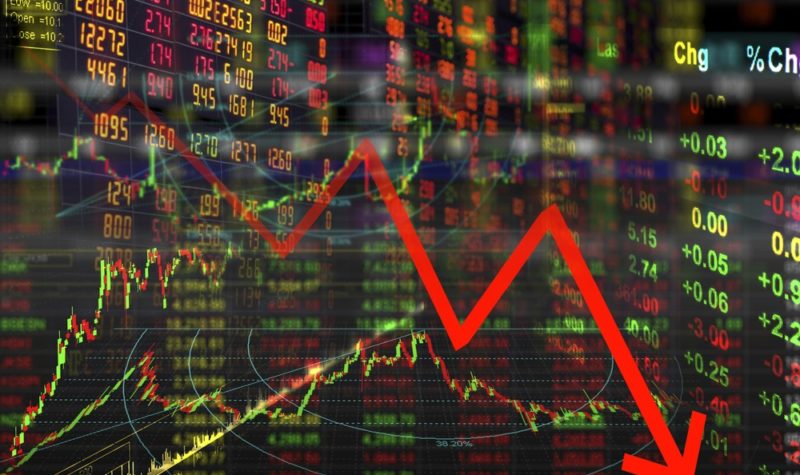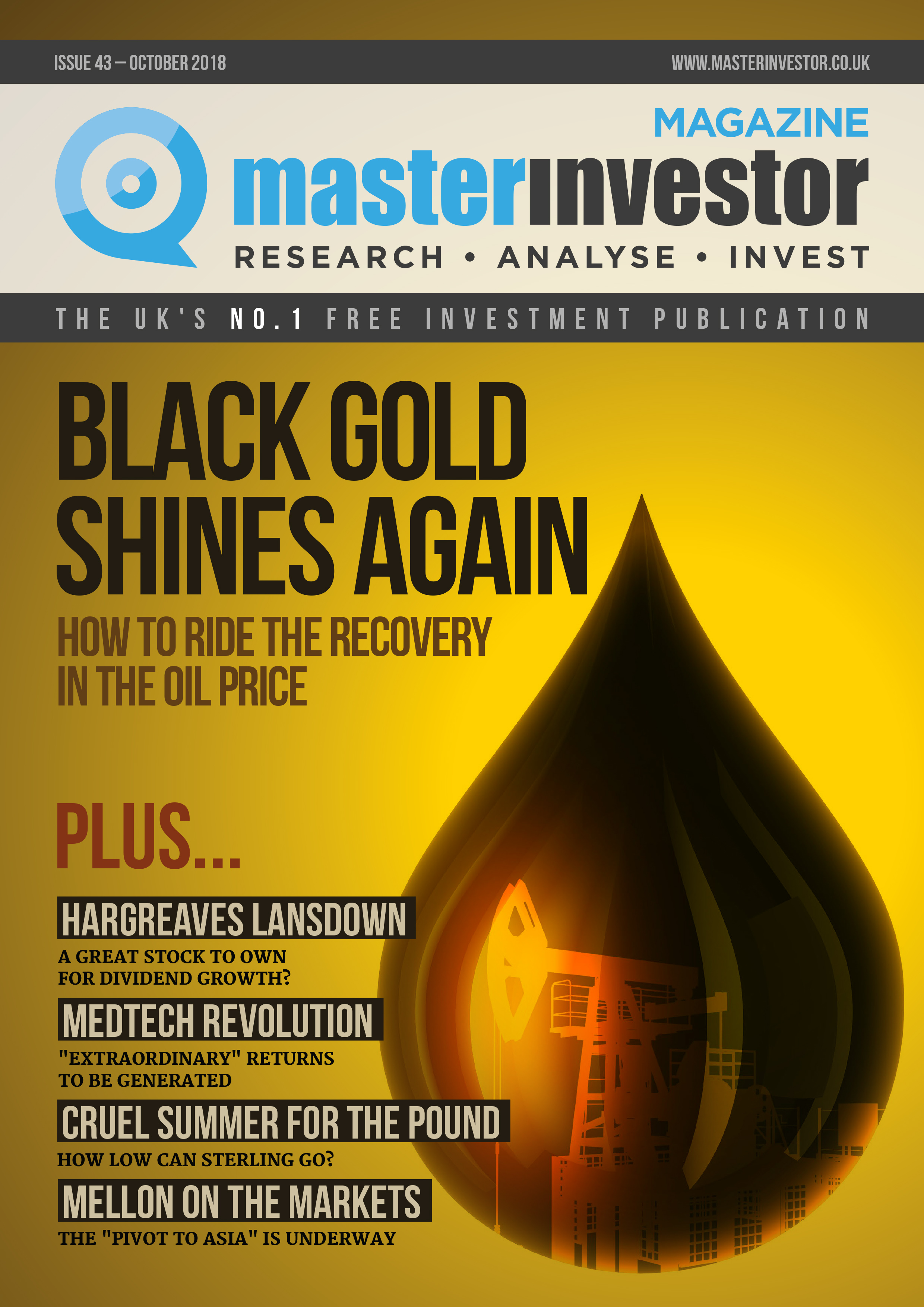There are no safe havens

Following on from last week’s article I received some highly alarming messages from my avid readers (yes both of them) that struck me as being full of unnecessary panic. Whilst I make no apology for being direct when writing about something serious as an impending stock market crash, I do feel that I should put people’s minds at rest.

Never miss an issue of Master Investor Magazine – sign-up now for free! |
There is some good news. The good news is that you are entirely in control of your investments and your portfolio. In other words, if the market is about to either moderately correct or even crash, which I believe it is, then you have nothing to fear because all that you have to do is implement a strategy to counter that event – it’s what you would call in a disaster recover scenario your ‘plan B’.
Now here’s the bad news. If you don’t have a ‘plan B’ then yes you should absolutely panic.
That’s because global growth is slowing down, Italy is on the brink of ruining the farcical project which is otherwise known as the euro, and other than this month, the last time that the UK stock market fell by more than 8% in a single month was so long ago that I didn’t even have any children (now I have three children and my eldest is nine years old).
Hopefully you can see my point, without my having to repeat myself with the various other factors pointing to a market fall. If you do still need convincing just read last week’s article and you will see what all the fuss is about.
Nobody wants to be a party pooper
The reason that I am restating the negativity of the market doom and gloom this week is not because the market has fallen further (it hasn’t) but rather because I feel that nobody wants to write about this serious topic, which is unfair to the public. And I feel that nobody wants to write about it for two reasons.
Number one, because the crash hasn’t happened yet and so nobody wants to be the one person to be wrong. It’s much better to hide in the crowd and be collectively wrong assuming the market will go up rather than be a sore thumb sticking out who got it wrong.
And number two, it’s because most columnists are not traders and therefore don’t actually know how to hedge or insure share portfolios. They just happen to be good writers and they take information from various sources and put it together to make their story.
Thankfully number one doesn’t bother me in the slightest because for me I don’t mind being wrong, because (as I explained last week) when I’m wrong, I can still be right. And as to number two, hedging, well it’s what I feel I do best (even if I say so myself).
The truth is that there are far too many stories especially related to the stock market which try to make sense of what happened yesterday and then make a story fit around it. That’s not of any use to me or to my clients.
What we want to know is what is going to happen tomorrow or next week or next month but I can see now that this is a space which nobody wants to fill. I understand it, I really do, but that’s not me and hence the reason for me to restate my position clearly on this.
I think that it also definitely helps when you have your own skin in the game because then you are likely to write with a less reactionary style to match the previous week’s events. It helps you write about what you expect for the future.
The future as I see it

Never miss an issue of Master Investor Magazine – sign-up now for free! |
So, let me tell you the future as I see it. The first thing is that from a technical point of view I do believe that we are likely to see a short-term recovery in price. This is because we are witnessing what analysts call a ‘saucer bottom’ chart formation which is a directionless market where the bulls and bears have a tug of war between themselves to see who is the strongest but with neither winning.
However, there is one interesting exception. Unlike a normal tug of war between two parties where there is no obvious winner if neither one is winning, in this case the bulls actually bizarrely win over time. That is to say that the longer the market can maintain its position and move sideways (in the case of the FTSE 100 around the 7,000 mark without breaching this level to the downside), the greater the likelihood that there will be of a short-term recovery in pricing i.e. the bulls win. There is a reason for this which I won’t bore you with today, just please take my word for it.
And the reason that I mention this short-term recovery is because this will be the opportune time for you to implement your plan B – it’s the most sensible and cost-effective moment for you to take preventative action to hedge your portfolio and insure against the downside.
Now don’t be fooled into thinking that this will be a prolonged market, it won’t. It’s a short-term recovery, nothing more than that. This is sometimes referred to in the market as a ‘dead cat bounce’.
The dead cat bounce
Now I’ve never seen a dead cat, let alone one that bounces but I do know that the mere mention of deceased house pets can never be great news. It’s a time where investors get sucked into a false sense of security and start buying again and as sure as night follows day it will happen again this time round I’m sure. In fact, I have already seen a lot of money push back into the market but I’m telling you, the smart money is still sitting on the sidelines.
If you do want to make a quick few shillings then yes you could make money now by buying but you need to get in and out quickly and have good timing, and the risks in my opinion don’t really justify the rewards.
Momentum is what drives markets, up and down, and what we are seeing is a shift from the bulls to the bears. This means that you could experience large scale falls in your share portfolio without their being any rationale or justified basis for it.
That’s because once there is enough movement in a company due to say strong earnings and profitability, the share price will often keep on climbing just from pure momentum. This over extends the true value of the company until it gets to a point where investors begin to realise that the car has been running on empty for a while. The wheels kept turning and the car kept moving but the engine had been switched off a while ago. It was just momentum carrying it forward.
Now people are coming to realise this, they also realise that the companies that they are holding should return to a more accurate value and the only way that it can do this is for them to ‘retrace’ their movement. And that’s exactly what is happening right now.
Canaries in the coal mine
If you don’t believe me just take a look at all of the companies in recent weeks who have decided to pull their IPOs. If that wasn’t a sign of distress I don’t what is. And I don’t blame them – a company’s board of directors may wish to list on the stock exchange and access the public market place for a number of reasons, including expansion, access to greater liquidity, brand awareness and so on – but there is also another reason and it’s pretty compelling – they want to make a shed load of money. It’s their exit strategy after all and it’s their one chance of extracting maximum money from their private business and in so doing, reaping the rewards from all of their hard work.

Never miss an issue of Master Investor Magazine – sign-up now for free! |
The problem is that if the market now has little wind in its sails, then their golden-plated IPO parachute isn’t going to give them the beautiful soft landing that they had hoped for. So, of course, what do they do? They postpone until a better climate returns.
And for those IPOs which are already out in the market place, well obviously it’s too late but in most cases the directors won’t suffer as much. It will be the investors who suffer the most. Take the company QUIZ (LON:QUIZ), for example. It only listed on the stock exchange last year and earlier this month it got whacked by an astonishing 30% in a day! The reasons cited were a fall in sales to notable retailers including Next and Debenhams, which meant that future earnings had been cut – that’s true but the real truth you need to know is that the company just simply lost its momentum.
It’s also very easy to see why it overextended itself because the company is actually doing well – an expected cash profit of around £16 million, a 31% increase in sales, and a staggering 160% jump in online revenue are all reasons to want to buy a piece of the action. However, the greater the story the greater the momentum and the greater the correction – now that earnings are being reigned in, the stock has fallen unceremoniously back to Earth with a thump.
And this is far more commonplace than the media would have you believe. Worse still, there is an irony that the safest companies that you thought that you held in your portfolio actually may well now pose the greatest amount of risk.
Be wary of ‘safe havens’
In fact, just last week I sat down with my researchers and we crunched some numbers. The analysis was very interesting. It showed that some of the most defensive and supposedly ‘low risk’ companies like SSE (LON:SSE) and Vodafone (LON:VOD) had suffered some of the greatest falls. So, it got me thinking? Could this impending market fall be worse than others before it?
By that what I mean is not that the fall will be greater than previous crashes but that the fall will concentrate on those sectors like utilities, pharmaceuticals, telecoms that traditionally are seen as the low-risk, low-beta areas? If that is the case then this market fall could be worse than even I imagined.
We even put together a report detailing our research to the firm’s clients last week, such was the importance of the analysis. The fact is that we are entering strange times. Vodafone is paying a yield of nearly 8% which to me is a red flag to a bull. Something doesn’t smell right and it’s not just Vodaone of course. SSE, BT, National Grid, Centrica, United Utilities and many more ‘safe companies’ are all at risk and now that we have done our research, I believe I know the reason why.
If you are holding any of these investments in your portfolio either directly or through a fund or other ‘safe’ high dividend paying companies and would like a free copy of our research you can contact my team by emailing info@londonstonesecurities.co.uk and request the report on ‘Why the safe haven shares are no longer’.
And for those of you who have not yet received the ‘Everybody should have an umbrella’report please bear with us. We had a lot of enquiries from last week’s article and I promise you that you will have something sent out to you this week.
Ranjeet Singh
CEO London Stone Securities
Comments (0)